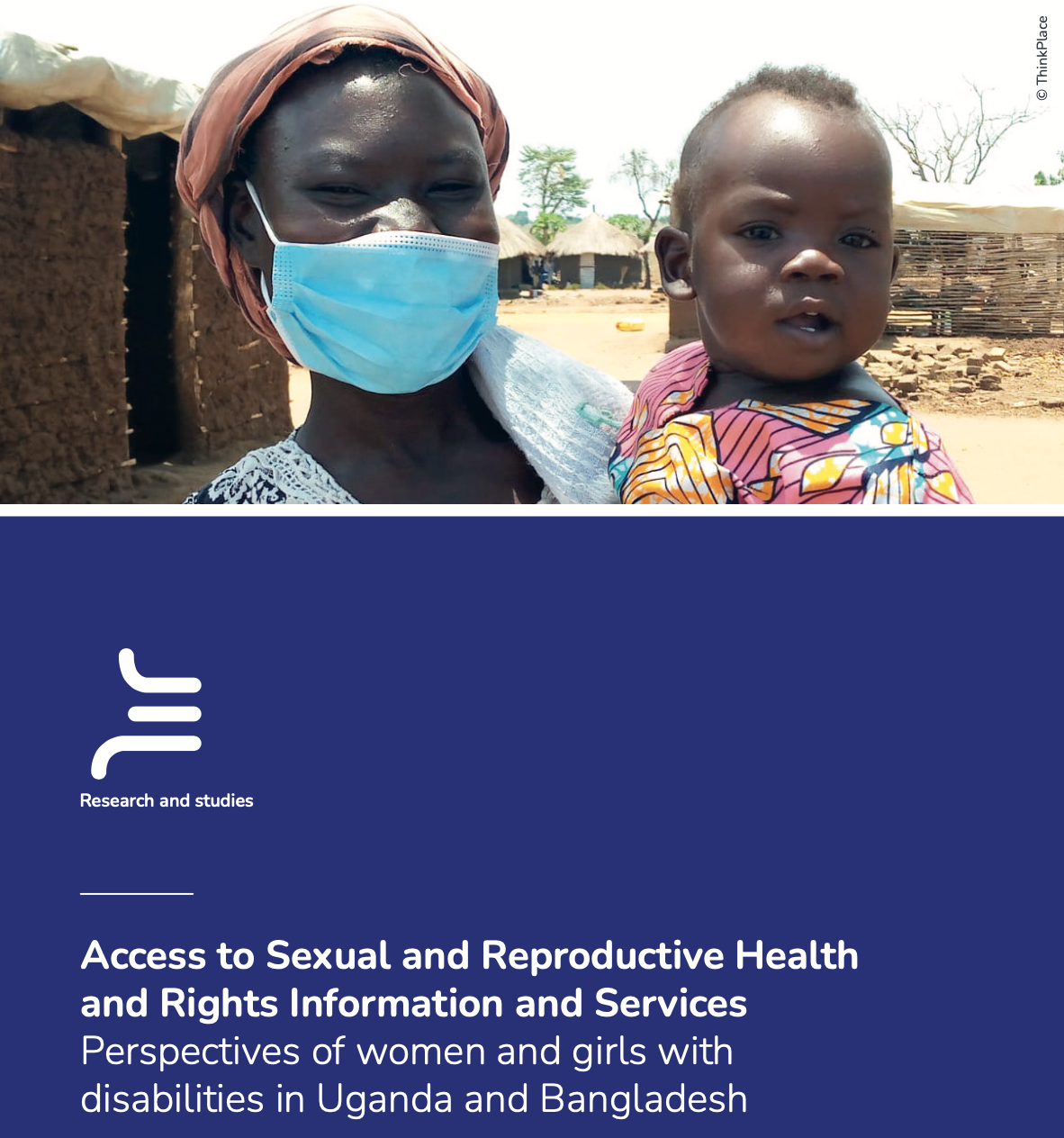Access to SRHR Information and Services: Perspectives of women and girls with disabilities in Uganda and Bangladesh
Over 1 billion people worldwide, around 15% of the world’s population, are estimated to live with some form of disability. According to WHO, this number is increasing (WHO, 2011) (WHO, 2020). Due to a negative interrelation between disability, education, and economic opportunities, persons with disabilities often live in hard-to-reach communities and are disproportionately affected by extreme poverty. Strong evidence from literature and practice shows that the sexual and reproductive health rights and needs of persons with disabilities, especially those who are most vulnerable due to poverty, continue to be largely unmet (WHO, 2011).
The aspirations, priorities, and concerns of many persons with disabilities about their sexual and reproductive health continue to be disregarded by caregivers, family members, communities, and health service providers. Additionally, social norms limit their sexuality, personal choices, and rights at many different levels – personal, interpersonal, and social. These societal stigmas and cultural stereotypes, rejections, and human rights violations have created barriers, preventing the fulfilment of the sexual and reproductive health and rights of persons with disabilities, and contributing to the misconception that they do not have the same right to sexuality, partnerships, and parenthood. This also increases the vulnerability of persons with disabilities to abuse (WHO, 2011).
Introduction to the project
WISH2ACTION, a Foreign, Commonwealth & Development Office (FCDO) 3-year funded project (2018-2021) is being implemented by a consortium of 6 international organisations to deliver 16.921m Couple Years of Protection (CYP), with 2.2m additional users. The consortia partners are operating in 16 low and middle-income countries in Asia and Africa, with a mandate of ensuring that the project interventions and services are inclusive and equally accessible by all people, including persons with disabilities.
Under the scope of the WISH (Women’s Integrated Sexual Health) Project, an Evidence Gap Map (EGM) analysis was undertaken. The results show that across all outcome areas, there is a low amount of evidence in relation to ‘what works’ to ensure persons with disabilities have access to SRH services in lower and middle-income countries.
In order to address this gap and contribute to the existing body of evidence, Humanity & Inclusion (HI) has initiated this research to better understand the factors, enablers, drivers, and patterns of access for women and girls with disabilities to SRH. The findings and understandings, in the local context of the two selected countries, Bangladesh and Uganda, aim to deepen the understanding of factors for exclusion and encourage enabling practices towards inclusion.
ThinkPlace, a Kenya-based consultancy in strategic and service design, carried out this qualitative research on behalf of HI and in liaison with HI’s in-country partners, as well as the Organisations of Persons with Disabilities (OPDs) that cooperated on the WISH2ACTION project. The research was carried out in four research sites in the selected countries and will help plan for SRHR social and behaviour change campaigns in the scope of SRHR inclusive service provision. More broadly, the research will guide actors working in SRHR service delivery and communication, advocacy, and cooperation with OPDs.
Read the full report here.
